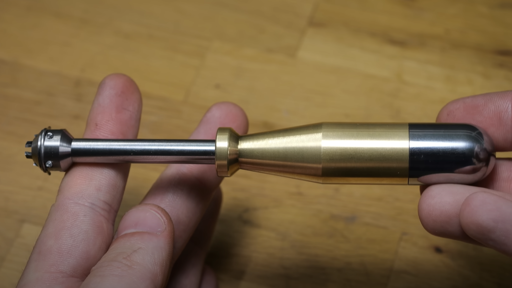Ever wondered why there isn’t an Allen key (or hex key, if you prefer) equivalent to the adjustable wrench or spanner? Turns out it’s actually quite a complex engineering challenge. But this is 2025, so, the solution hasn’t come from a top university engineering lab or a big corporate, but a YouTube competition.
According to YouTube channel Chronova Engineering, the adjustable wrench or spanner was patented back in the 1890s. You might have thought an adjustable tool for Allen bolts, the ones with hexagon inserts in their heads, wouldn’t be far behind.
The Allen bolt itself wasn’t invented until a decade or so after the adjustable wrench. But as Chronova Engineering says, there’s surely been enough time since to come up with a solution. But apparently not. So, the channel had a go at what’s thought to be the world’s first adjustable Allen key.
Chronova Engineering ran through numerous iterations to come up with a workable solution. The first design had six splines or prongs, one for each of the corners of the Allen bolt insert. That suffered from terminal torsional flex. So, a three-spline alternative was next.
That design was promising at first. Torsionally, it was very strong. However, it could only support a fairly pathetic 2 nm of torque before the springs pushing the three prongs into the Allen head corners began to flex.

If you enjoy seeing things being beautifully engineered, you’ll love this video. (Image credit: Chronova Engineering)
The final design reduced the prong count to two and essentially removed the spring-flex issue entirely. Plenty of other engineering challenges were surmounted, including the optimisation of the tempering process to toughen the steel used for various parts. The gradient, contact area characteristics and wear resistance of the pushrod that’s used to adjust the separation of the two prongs was also the subject of extensive iterations and tuning.
Ultimately, this design allowed the two prongs to be hinged instead of merely flexing, which improved overall rigidity as well as long-term durability. Testing proved that the design worked, and that the prongs wouldn’t break even under significant stress.
So, why haven’t we seen an adjustable Allen key like this before and will it now become as ubiquitous as the adjustable spanner? The answers to both are closely related. As clever as this tool is, it has a couple of obvious limitations.
As engineered here, it only supports an adjustment range between 4mm and 6mm. Admittedly, it will support both metric and imperial Allen bolts that fall within that range, but it’s still awfully narrow.
Chronova Engineering says that range could be extended with some fine tuning. But we suspect not by all that much. So, while you could probably replace four or even six Allen keys with this one tool, you’d still need several of them in different sizes to cover off a decent range of Allen bolts.
The other problem is that the head of the tool is very broad. That significantly limits how the tool can be used. It can’t be inserted into narrow channels and spaces, for instance. Ultimately, then, it’s not nearly as flexible as an adjustable wrench or spanner, or a pocket full of Allen keys. But it’s still pretty cool. And I definitely want one, or more likely a set of three, if only because it’s so beautifully engineered.
You might also like to check out Chronova Engineering’s past projects, which include everything from a miniature ion thruster to a folding pocket knife.
From PCGamer latest via this RSS feed


